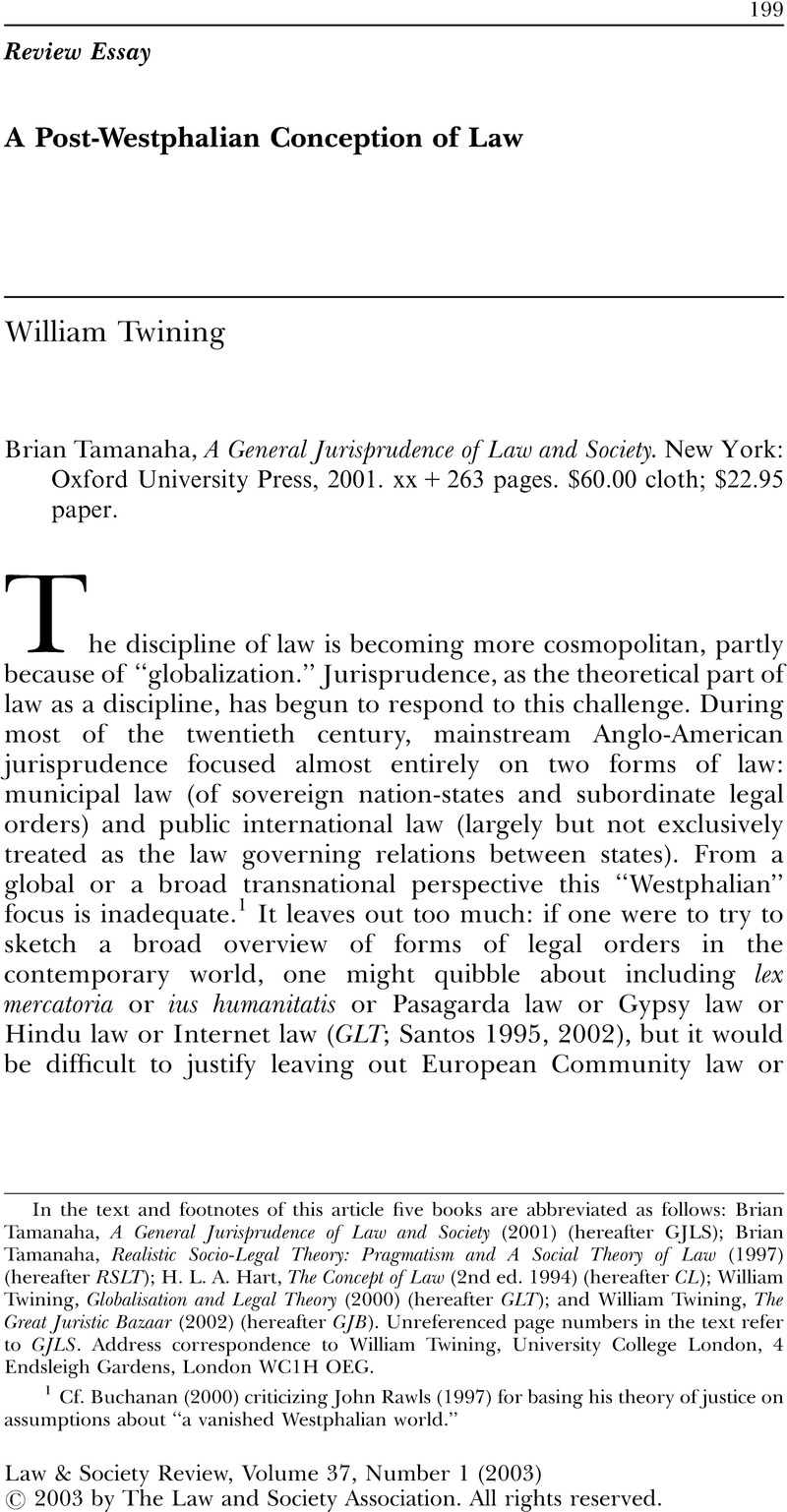Crossref Citations
This article has been cited by the following publications. This list is generated based on data provided by
Crossref.
Twining, William
2004.
Diffusion of Law: A Global Perspective.
The Journal of Legal Pluralism and Unofficial Law,
Vol. 36,
Issue. 49,
p.
1.
Örücü, Esin
2004.
The Enigma of Comparative Law.
p.
93.
Twining, William
2005.
Social Science and Diffusion of Law.
Journal of Law and Society,
Vol. 32,
Issue. 2,
p.
203.
Walby, Kevin
2007.
Contributions to a Post-Sovereigntist Understanding of Law: Foucault, Law as Governance, and Legal Pluralism.
Social & Legal Studies,
Vol. 16,
Issue. 4,
p.
551.
Morss, John R.
2007.
Good global governance: custom, the cosmopolitan and international law.
International Journal of Law in Context,
Vol. 3,
Issue. 1,
p.
59.
Hertogh, Marc
2007.
What is Non-State Law? Mapping the Other Hemisphere of the Legal World.
SSRN Electronic Journal,
COTTERRELL, ROGER
2008.
Transnational Communities and the Concept of Law.
Ratio Juris,
Vol. 21,
Issue. 1,
p.
1.
Twining, William
2009.
Environmental Law and Justice in Context.
p.
76.
Wheatley, Steven
2009.
Non-State Actors as Standard Setters.
p.
215.
McKay, John
2011.
The Humiliation of Law: Legal Theory and Epistemic Fruit.
SSRN Electronic Journal,
Nichols, Philip M.
2012.
The Business Case for Complying with Bribery Laws.
American Business Law Journal,
Vol. 49,
Issue. 2,
p.
325.
Desai, Deval
and
Woolcock, Michael
2012.
The Politics of Rule of Law Systems in Developmental States: ‘Political Settlements’ as a Basis for Promoting Effective Justice Institutions for Marginalized Groups.
SSRN Electronic Journal,
Nobles, Richard
and
Schiff, David
2012.
Using Systems Theory to Study Legal Pluralism: What Could Be Gained?.
Law & Society Review,
Vol. 46,
Issue. 2,
p.
265.
Ehrenberg, Kenneth
2013.
Functions in Jurisprudential Methodology.
Philosophy Compass,
Vol. 8,
Issue. 5,
p.
447.
Hills, Alice
2014.
Partnership policing: Is it relevant in Kano, Nigeria?.
Criminology & Criminal Justice,
Vol. 14,
Issue. 1,
p.
8.
2015.
Law's Ethical, Global and Theoretical Contexts.
p.
367.
Kirchmair, Lando
2019.
Descriptive vs. prescriptive global legal pluralism: a gentle reminder of David Hume’s is–ought divide.
The Journal of Legal Pluralism and Unofficial Law,
Vol. 51,
Issue. 1,
p.
48.
Abímbó.lá, Kó.lá
2021.
The Òrìs.à Legal Tradition.
Philosophia Africana,
Vol. 20,
Issue. 2,
p.
107.





